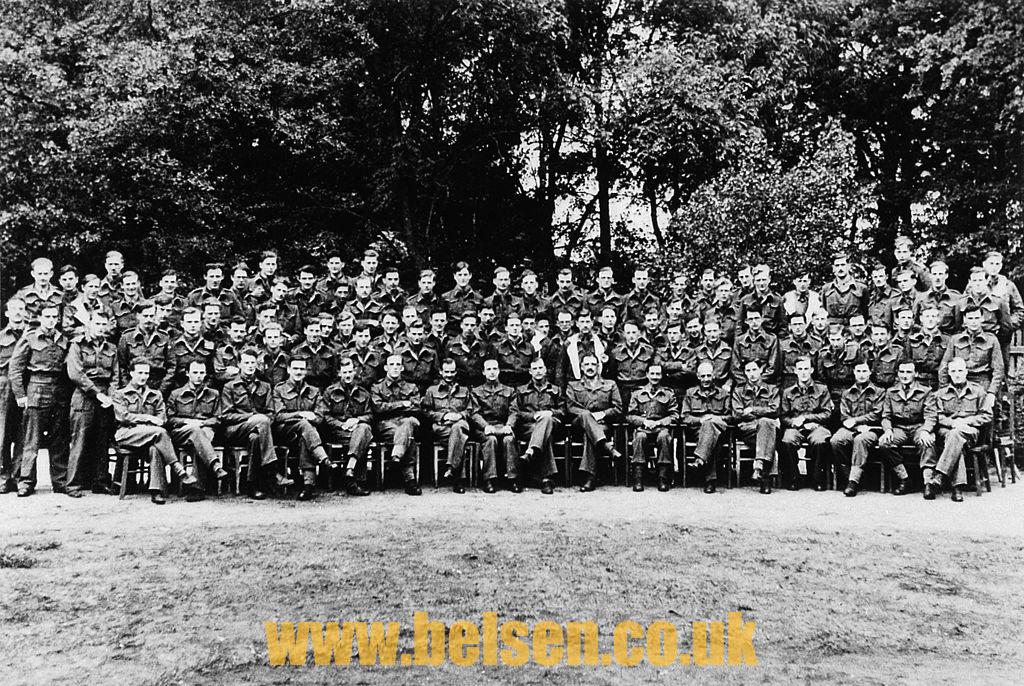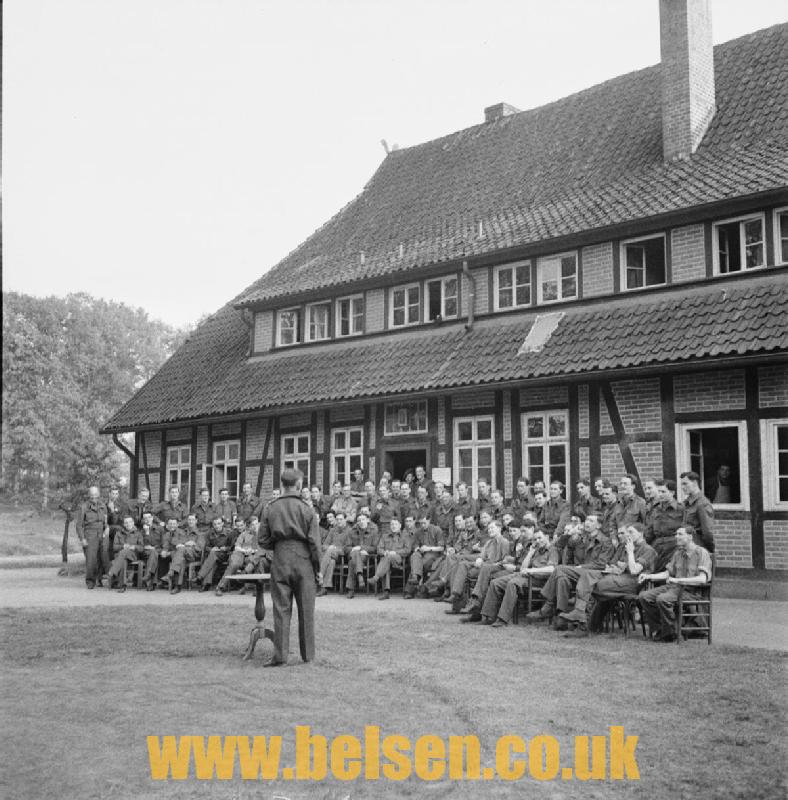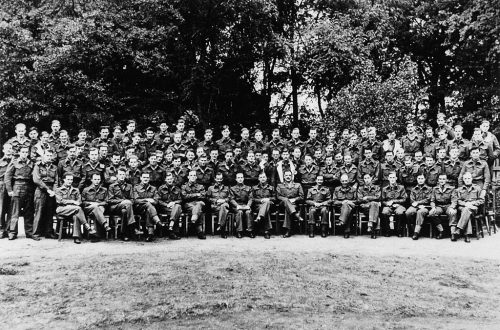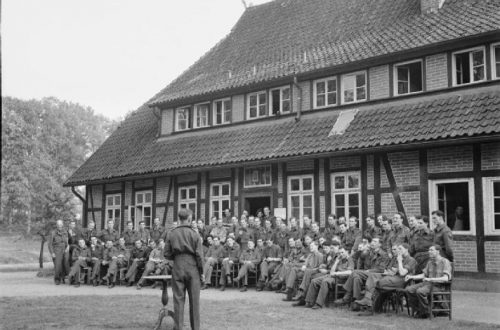
Medical Students: At the Camp
The first students arrived at Belsen at the end of April 1945, with the remaining students reaching the camp at the beginning of May 1945. Following a briefing by Meiklejohn on 2 May 1945, they began work at Camp 1 the following day.

Links to Colleges and Names
Sources show that twelve students came from each of Guy’s Hospital, St Thomas’, St Mary’s, The London and University College, eleven from Westminster, nine from St Bartholomew’s, eight from the Middlesex and the remainder from King’s College.
Roles
Initially, the role of the students was to take over one or two of the 200 huts each, with the responsibility of getting them cleaned (human laundry) and supervising the feeding of and fair distribution of food to the inmates.The association of intravenous feeding and Nazi activities rendered this kind of feeding inappropriate. An unpopular mixture known as the “Bengal mixture” was used for feeding. In addition to malnutrition and starvation, tuberculosis, typhus and cancrum oris were common, and later Wernicke’s encephalopathy and pellagra.
Some of the challenges the students faced were reported by student Thomas Gibson, who disclosed the difficulties in caring for people when medicine and adequate nursing help was lacking, on the background of the dilemma of how “to explain to a Pole who speaks little French”, and how difficult it was “to give a course of sulphonamide to a Russian with erysipelas who only speaks Russian”. The Lack of medical aid, equipment, drugs and hospital facilities meant improvising and making the best out of what was there.
Michael Hargrave, in his journal, described the human laundry, assembled in two adjacent stables where 17 tables were each surrounded by four German nurses, who washed the inmates, covered them in DDT and then wrapped them in clean towels before they were transported again. As a student running his hut, he marked whoever he felt appropriate to send there. The Hungarian aid would then porter them into an ambulance to be taken to the human laundry in Camp II.
On 14 May 1945, the 35 Casualty Clearing Station arrived and the remaining sick were moved to the German Military Hospital, later renamed the Glyn Hughes Hospital. It grew to accommodate 13 000 patients, and staff including the students, the British Red Cross and German medical staff.
The work by the students was significant in reducing the death rate from initially more than 500 a day to fewer than 100 a day by mid-May. On 20 May 1945, Camp 1 was destroyed and the students moved to Camp 2.
Life outside the camp
They were issued with SS Panzer dot-camouflaged coats by Captain Walter Carton “Frosty” Winterbottom. Some Canadian airmen bought them cigarettes and chocolates. Each student was given twice the usual ration of rum every night. Theatre and cinema was provided for entertainment. Local RAF units gave wine and the Red Cross issued cigarettes to them. Later, a wireless and a dartboard became available.
Unwell students
Some students became unwell themselves with seven contracting typhus and two tuberculosis. Bart’s student Andrew Dossetor was hospitalised with typhus, as too was John Hancock from The London, who was later cared for by Horace Evans. John Jenkins of Westminster medical school recovered from life-threatening tuberculosis. Westminster’s tercentenary publication reports that four students died however, there is no evidence that any died.
Return to England
After a month at Belsen the students were relieved by Belgian medical students and returned to England. One of the students, Alex Paton, later described how on 29 May 1945 upon return, he landed at Croydon airport “with feelings that are too complicated to analyse at the moment”. One newspaper reported that year, that 21 cases of typhus were diagnosed in England, seven of which were volunteer medical students returning from Belsen.
Meiklejohn, who was responsible for administering the “starvation mixture”, paid tribute to them and majors A. P. Prior and E. M. Griffin gave particular thanks to students D. G. A. Westbury and J. A. Turner from Guy’s and J. Stephenson from St Thomas’.
Later reflections
Several students later talked of their experiences at Belsen. On the bulldozing of bodies into mass graves, John Dixey later recounted; “It wasn’t as totally horrifying as you might reasonably expect it to be because it was on such an enormous scale…If it had been several hundred bodies one might have been desperately upset and affected by it mentally and psychologically, at any rate. But no it was on such a huge scale it was rather like trying to count the stars. There were thousands and thousands of dead bodies and you couldn’t really consider them to be your aunt or your mother or your brother or your father because there was just too many and they were being bulldozed into graves.”
D. C. Bradford believed that they were able to cope with the situation, being as young as they were “it was I think that we were young and much more flexible and could take it in those days”.
Sources show that twelve students came from each of Guy’s Hospital, St Thomas’, St Mary’s, The London and University College, eleven from Westminster, nine from St Bartholomew’s, eight from the Middlesex and the remainder from King’s College.
10,927 total views




